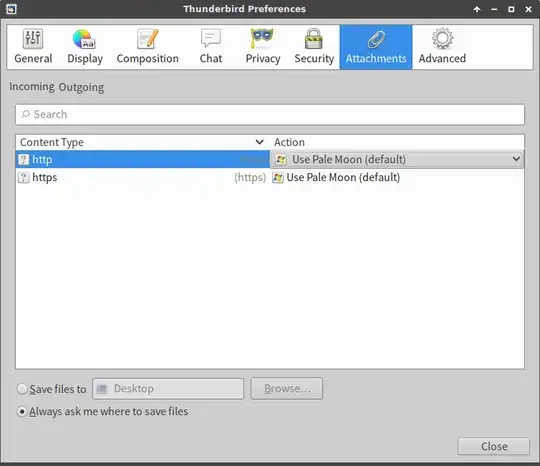I want to be able to click links in Thunderbird emails and have them open in Chromium (package name chromium-browser). Instead, they open in Firefox.
I have tried the following:
xfce preferred applications (Chromium is not listed, so I had to hunt down the executable) -- next time I run chromium, it complains that it is no longer the default browser.
Telling Chromium to set itself as the default browser. Thunderbird opens links in Firefox.
update-alternatives. It's already listed as an alternative at the same priority as Firefox. The "open web browser" app menu item opens Chromium. Thunderbird opens links in Firefox.
I have looked through the entire preferences gui in Thunderbird (but not the advanced config editor yet) and seen nothing that mentions what browser to open links in.
Please note that this is not Google Chrome.
